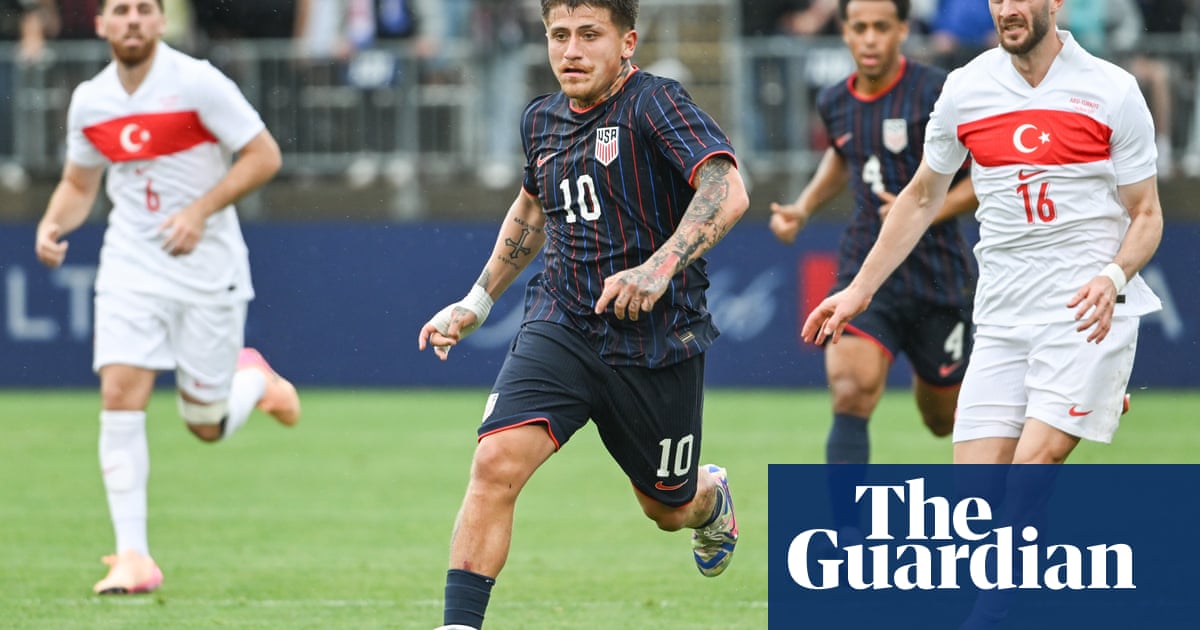The United States men’s national team entered this summer facing numerous doubts amid their efforts to be fully prepared for the massive 2026 World Cup on home soil. The largest among them were quite basic. This team had, for most of its time under Mauricio Pochettino and at some points before that, showed a frustrating inability to seize upon moments, to impose themselves on games, to make other teams pay for their mistakes. In the few moments where they did grab momentum, they struggled to hold it for long.
Saturday’s game againstTurkeywas just a friendly, but it was also a way to start allaying those doubts – a first step on the last summer slate before the World Cup, to show that the US were still capable of doing those things, no matter the personnel.
In a 2-1 loss, the US failed to deliver in full.
Within 60 seconds on a rainy, humid afternoon in East Hartford, Connecticut, the US gave fans a huge reason for optimism. Jack McGlynn, one of a number of players who aim to use this summer to make a case for themselves as part of next summer’s marquee group, caught the 34,023-strong crowd and the Turkish defense by surprise with a sight MLS observers are well used to by now: a curling effort from outside the box, nestled nicely into the far corner of goal. 1-0 up, not even two minutes in, the US had assuaged at least some of those nagging doubts.
Then, over the next quarter of an hour, the gap in quality between a mostly first-choice Turkey and a very shorthanded US became apparent. The back four found themselves in regular retreat. At times, doubts about the ability to hold leads surfaced glaringly. Johnny Cardoso, caught in possession at his own penalty spot, somehow failed to read the pressure oncoming from Arda Güler, knocking his pass directly against the Real Madrid forward’s legs, which bobbled past a helpless Matt Freese for the equalizer.
Turkey, content at this point to let the US come forward, regularly sprang attacks on transition. As one of them unfolded, Pochettino galloped along the sideline at the edge of his technical area, seemingly transmitting the energy and attention he hoped to see from his defensive unit. A minute later, the US failed to track an overlapping run, lucked out when two Turkish attackers missed on the resulting cross, failed to gather the ball on the other side, failed to effectively clear the second cross, and went down 2-1 when Kerem Aktürkoglü cleaned up the mess.
The half-time introduction of Tyler Adams, one of the few undoubted first-teamers to be with the squad this summer, changed the US outlook for the better. So, too, did the continued hustle from Diego Luna, who led a fast break in the 60th minute that amounted to the best US chance of the night. Luna started the attack after the US backline effectively played through Turkey’s press, finding McGlynn in the right half space. McGlynn’s shot was blocked, but Adams’ recovery and hesitation to freeze his defender allowed him time to set up a cross to Malik Tillman. The resulting header was clearly just an attempt to make contact – in most cases, from that range, probably a fine approach. But not this time, as it went directly into the arms of Turkey goalkeeper Berke Özer.
There were other chances, including a ball that fell to Chris Richards at the doorstep that got caught underheath the defender’s feet with just seconds to go. The final whistle blew soon after.
Max ArfstenThe Columbus Crew man got the start at left back and was effective going forward without sacrificing positional discipline. Turkey threw a lot of challenges his way and he seemed to be up for most of them. At the very least, he’s put himself in a position to be a depth option at fullback.
Jack McGlynnAside from the goal, the Houston Dynamo midfielder found himself in a few other situations at the top of the box where he was more than willing to let rip from distance. That gave the Turkey defense something to think about, and as his time on the field went on their willingness to step to McGlynn helped to create a little bit more space for Agyemang to work.
Tyler AdamsHis introduction changed the US outlook significantly, helping control the central areas where Turkey focused much of their attacks. He should have had an assist on Malik Tillman’s point-blank header as well.
Sign up toSoccer with Jonathan Wilson
Jonathan Wilson brings expert analysis on the biggest stories from European soccer
after newsletter promotion
The US’s attitudeThe primary complaint about the US performance at March’s Nations League was the lack of passion, fight, and energy. That was not an issue this time around. Several players appeared more than willing to mix it up with the opposition, tackles were made with conviction, and while the quality wasn’t always the best, the attitude was clearly much improved.
Johnny CardosoOne of the weirdest conundrum’s of the current USMNT is how Cardoso can look so effective week-to-week with Real Betis, and then so pedestrian with the US. On Saturday, Cardoso was worse than pedestrian. His giveaway practicallywasthe equalizing goal, and his minute-to-minute work on and off the ball left much to be desired.
Turkey’s approachThe Crescent Stars seemed largely content to cede possession to the US all the way up until the final third, which doesn’t say much for what they thought of the Americans’ ability to pick apart a defense. In fairness, this approach bit them a bit with McGlynn’s goal, but by and large it seemed to work.
The US head to Nashville to play a friendly with Switzerland, their last tune-up before the Gold Cup begins on 15 June against Trinidad & Tobago in San Jose, California.
